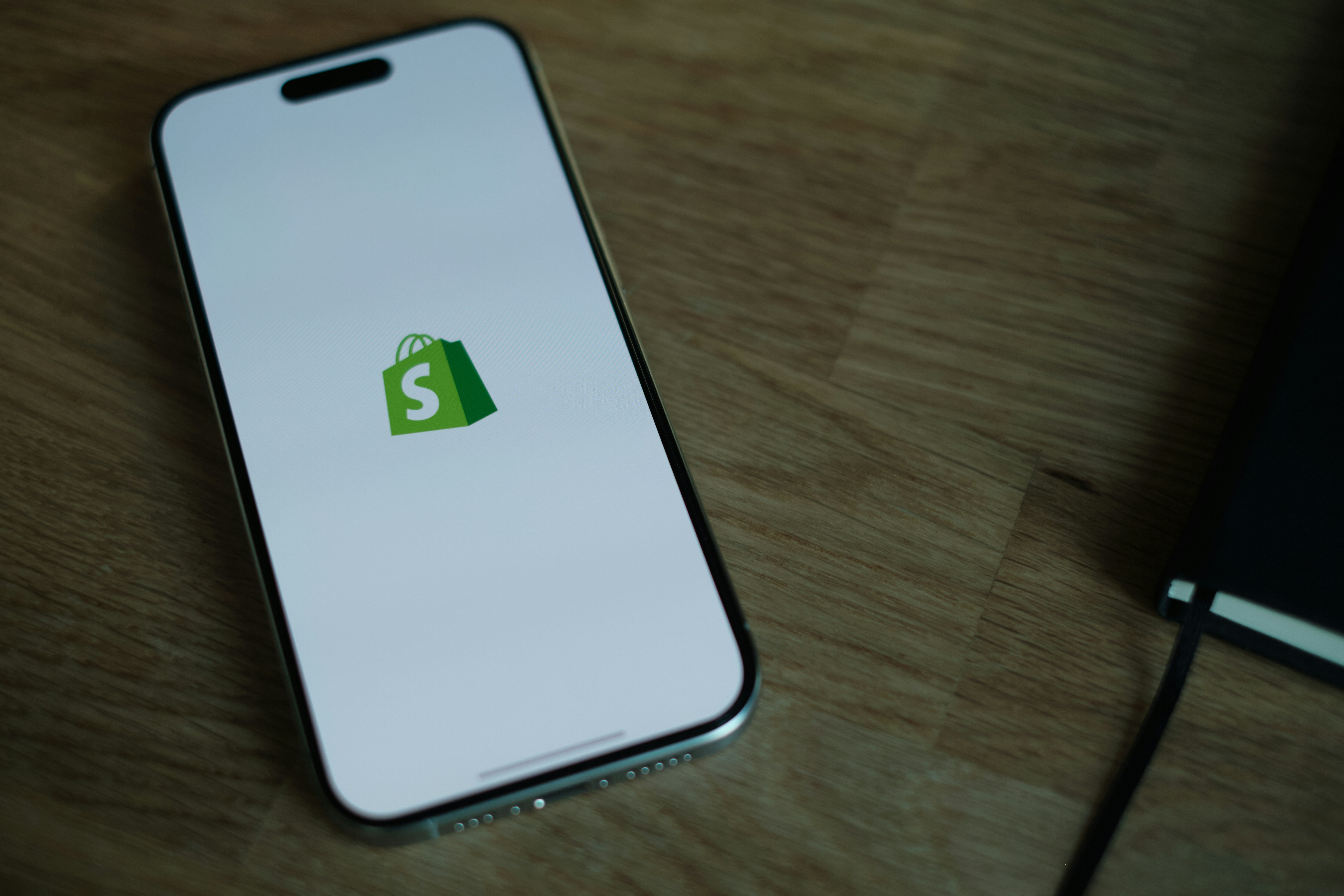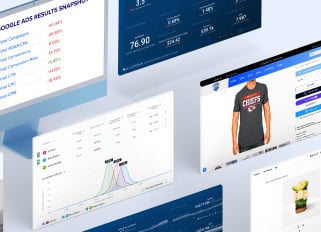
How to Optimize Your Shopify Store for Mobile: Best Practices, Tips, and Apps
Mobile shopping is no longer just a trend—it's a necessity. With over 58% of online traffic coming from mobile devices, optimizing your Shopify store for a seamless mobile experience can make or break your e-commerce success. Moreover, a mobile-friendly store not only improves user experience but also boosts conversion rates and search engine rankings.
This blog explores the importance of mobile optimization, offering real-world best practices, Shopify-specific tips, and key apps to enhance your store. Let's ensure your Shopify store is fully equipped for mobile success.
Why Mobile Optimization Matters for Shopify Stores
According to Statista, mobile commerce sales are projected to exceed $647 billion by 2025, accounting for 40.4% of all ecommerce transactions. Hence, optimizing Shopify for mobile devices is vital for online businesses.
Other important reasons to optimize your Shopify store for mobile include:
Google's Mobile-First Indexing
Google’s mobile-first indexing means the search giant predominantly uses the mobile version of your site for ranking. Without a mobile-optimized Shopify store, your search rankings—and the organic traffic they bring—are at risk.
Simply put, prioritizing mobile optimization does more than improve user experience; it ensures your store stays visible and competitive in a crowded marketplace.
Higher Conversion Rate and Lower Bounce Rate
Your business's survival hinges on your customers, many of whom use handheld devices. A website that isn't mobile-optimized risks losing potential buyers. When customers visit your online store, they assess how easy it is to shop there, making factors like page load speed and responsiveness crucial.
For instance, a page or mobile website that loads in 1 second boasts an average conversion rate of nearly 40%, which declines to 29% if loading takes 3 seconds. Therefore, effective mobile optimization can enhance your conversion rate and diminish the bounce rate.
 The Impact of Mobile Shopping Trends
The Impact of Mobile Shopping Trends
The shift towards mobile-first shopping is undeniable. Recent studies reveal that 79% of smartphone users have made a purchase online using their devices in the last six months. If your Shopify store isn’t optimized for mobile, you’re likely losing money on a significant chunk of potential sales.
It’s also important to remember that mobile users expect fast loading times, easy navigation, and seamless checkouts—all elements that directly influence conversion rates. A one-second delay in page load time can decrease conversions by 7%.
Improved Customer Experience
Finally, optimizing your Shopify store for mobile devices significantly enhances the customer experience. When your site loads quickly, presents products effectively, and lets buyers complete their purchases with just a few taps or clicks, you'll have more satisfied customers and better overall store interaction.
Best Practices for Mobile Optimization
1. Use a Responsive Design
Responsive design ensures your Shopify store adjusts seamlessly to different screen sizes, offering a consistent browsing experience across all devices. Most Shopify themes are designed to be responsive, but testing how your site behaves on various devices is essential to guarantee a smooth experience.
2. Enhance Loading Speeds for Mobile
Fast-loading pages are critical. Nearly 53% of users abandon a site if it takes more than 3 seconds to load. You can optimize your store by:
- Compressing images without sacrificing quality using tools like TinyPNG.
- Minimizing heavy scripts and unnecessary plugins.
- Using Content Delivery Networks (CDNs) to reduce server response times.
3. Simplify Navigation for Touchscreens
Design navigation with mobile users in mind. Dropdown menus, large buttons, and straightforward layouts make it easy for users to explore your store with their thumbs.
4. Optimize Product Images and Videos
High-quality visuals are essential for e-commerce, but they must be mobile-friendly. Compress large files, use adaptive image sizes, and ensure videos are optimized for mobile playback. Tools like Shopify's Image Optimizer are perfect for this.
5. Improve Checkout Processes for Mobile
A cluttered or complex checkout process is the #1 cause of cart abandonment. Streamline your checkout experience by:
- Enabling one-click checkout options.
- Offering multiple payment methods like Apple Pay and Google Pay.
- Minimizing form fields and ensuring autofill functionality is enabled.
Tips for Mobile Optimization on Shopify
Use Mobile-Optimized Themes
Shopify offers several professional, mobile-optimized themes in its Theme Store. Opt for themes that are not only responsive but also customizable to meet your brand’s needs. Popular options include Debut, Brooklyn, and Turbo.
Optimize Your Images
Shopify mobile image optimization is critical. Even with a mobile-friendly theme for your online store, you might encounter challenges with displaying images correctly. Ensure your visuals—such as banners, product photos, and videos—are checked across multiple devices.
Customize for Your Target Audience
Your audience dictates how your store should function. For instance, millennials may prefer quick payment options, while a Gen Z audience may look for modern visual interfaces. Tailor your Shopify mobile store accordingly.
Optimize CTA Buttons
CTA buttons are crucial for prompting customer purchases, so optimizing them for mobile use is essential. Enhance their design by making them larger for easy tapping, incorporate strong action verbs to capture customer attention, and conduct A/B testing to identify the most effective CTA for your store.
Use Optimal Amount of Text
Long blocks of text are ineffective for your online store, whether on a mobile device or desktop. Customers typically scan rather than read information, so ensure all text is easy to access. Use concise paragraphs and incorporate bullet points or numbered lists whenever possible to enhance readability.
Test Your Store on Multiple Devices
Regularly test your store on different mobile phones and devices with varying screen sizes and browsers. Tools like Google Lighthouse can help highlight issues that need addressing.
Leverage Analytics for Insights
Use Shopify’s built-in analytics or tools like Google Analytics to monitor mobile performance. Monitor bounce rates, device-specific traffic, and page speeds to identify and fix any pain points.
Top Apps for Enhancing Mobile Experience on Shopify
Certain Shopify apps are game-changers for mobile optimization. Here’s a quick look at some of the best options available:
1. Shopify Mobile App Builder
This app allows you to create and customize a mobile app for your store without any coding knowledge. It offers features like push notifications, in-app purchases, and more.
2. PageFly Landing Page Builder
This Shopify app helps you create visually appealing, responsive landing pages for your online store. It's a great tool for optimizing mobile experiences and driving conversions.
3. Plug in SEO
This app is a must-have for improving the SEO of your Shopify store on both desktop and mobile devices. It offers real-time analysis and suggestions to improve page ranking.
3. Smart SEO by Sherpas Design
This app helps you optimize your Shopify’s SEO for mobile devices specifically. It offers features like customizable meta tags and titles, Google AMP support, and more.
4. TinyIMG SEO & Image Optimizer
This app automatically optimizes your store’s images for mobile devices, improving page loading speeds and overall user experience.
5. Candy Rack
This app allows you to upsell and cross-sell products on your Shopify store, specifically optimized for mobile devices. It helps increase average order value and improve the customer shopping experience.
6. Yotpo
This app collects and displays customer reviews on your product review pages, optimizing them for mobile devices. Positive reviews and social proof can increase conversions and improve trust in your brand.
How Challenging Is It to Optimize Your Shopify Store for Mobile on Your Own?
By following the tips above, you can improve your Shopify theme's mobile optimization. However, these are just foundational steps to get started. Expertise in Shopify design, development, and coding is crucial for advanced mobile optimization. Without this knowledge, you might waste time on ineffective solutions.
Therefore, seeking professional help from experienced developers is advisable. Consulting third-party experts like BlueTuskr ensures your online store delivers an exceptional mobile experience.
Our Expertise in Shopify Mobile Optimization
BlueTuskr is one of those vendors that can achieve top-notch Shopify mobile optimization. We specialize in custom Shopify theme development to ensure your website is mobile-friendly. With over a decade of experience and more than 250 happy clients, our team is well-equipped to enhance your online store.
We also excel in CRO, SEO, and marketing strategies to help you grow your ecommerce business. Contact us today for a free consultation on Shopify mobile optimization.
 FAQs
FAQs
How can Android apps enhance my Shopify website?
Android apps can significantly boost the functionality of your Shopify website by providing seamless integration with multiple tools and services. They enable features such as push notifications, customized shopping experiences, and enhanced user interfaces, ensuring that your website is not only accessible but also engaging to Android users.
What are the best practices for running marketing campaigns on a Shopify platform?
To run marketing campaigns on a Shopify platform, start by defining your target audience and crafting personalized messages. Utilize tools available on Shopify, like email marketing integrations and social media plugins, to reach a wider audience. Lastly, leverage analytics to track the performance of your campaigns and adjust strategies based on consumer behavior and feedback.
What benefits does the Shopify platform offer for online businesses?
The Shopify platform provides a comprehensive suite of tools designed for eCommerce success. It offers an easy-to-use interface for store management, a wide selection of themes for a customized look, and a robust app store for added functionality. Additionally, its reliable security features and scalable solutions accommodate growing business needs.
How do I ensure my Shopify website is mobile-friendly?
Ensuring your Shopify website is mobile-friendly involves selecting responsive themes, optimizing all images and media, and enhancing navigation for smaller screens. Regular testing on various devices and utilizing Shopify's mobile optimization tools further enhance mobile users' experience.
Take the Mobile-First Leap with Shopify
Your Shopify store’s mobile experience is no longer a “nice-to-have”–it’s a necessity. From optimizing page speed to streamlining navigation, prioritizing a mobile-first strategy can transform your sales and ensure your e-commerce store thrives.
Start by implementing the best practices mentioned above, pair them with tips catered to your audience, and consider leveraging apps to supercharge your efforts.
We understand that it can be overwhelming for some merchants to optimize their Shopify store for mobile devices while managing other aspects of their business. That’s why BlueTuskr is here to help. So why wait? Let’s take the mobile-first leap together!
Connect With Us
Recent Post

.png)





Tell us what you think!